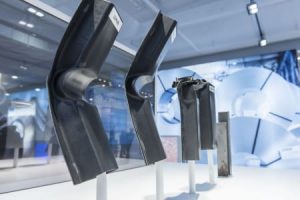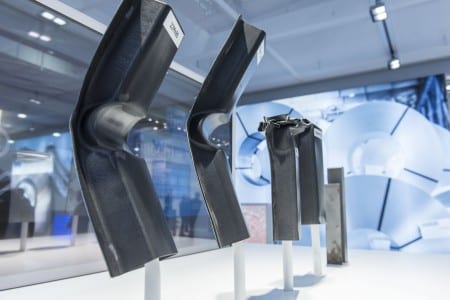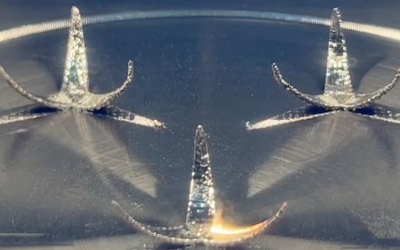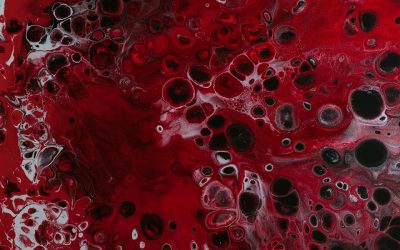‘Lightweighting’ is a key concept for future vehicle generations. OEMs, suppliers. and materials developers increasingly face the challenge of developing new ideas to meet conflicting requirements with regard to price, safety, quality and design.
With new property profiles and significant weight reduction potential, the newly developed composite tribond offers a possible steel solution for lightweight applications. For this pioneering innovation, thyssenkrupp has now been presented with the Materialica Award at eMove360° Europe, the international trade show for mobility.
Thyssenkrupp Steel have already opened up significant lightweighting potential with their high-strength and ultrahigh-strength multi-phase steels. Tribond, designed as a modular system, now offers further weight reduction potential for the hot forming process.

Tribond is available as 1200 variant, e.g. for longitudinal members in cars and as stronger 1400 design for high bending stresses, such as in B-pillars. Source: Thyssenkrupp Steel
The new composite has a multilayer structure that permits completely new property profiles. The tribond 1200 and tribond 1400 variants combine an inner layer of high-strength steel and outer layers of formable, ductile steel. This permits high strength and ductility to be realized in one part, something currently not possible with homogeneous materials.
The 1200 variant was specially developed to absorb as much energy as possible in the event of high axial stresses, such as those caused by a collision. By contrast, the higher-strength 1400 variant was specifically developed for parts subjected to high bending stresses such as B-pillars.
To validate the material’s behavior in the event of a crash, the Duisburg-based company has installed a simulation process that calculates and tests the desired property profiles in advance.
Generally, conflicting material properties such as high strength and ductility could only be realized bu using complex technological processes such as tailored tempering. “Tribond has the advantage for customers that the complexity switches back to the material, in this case to the production of the multilayer slabs. Customers can process tribond directly on their existing production lines,” explains André Matusczyk, head of the Auto business unit at thyssenkrupp Steel Europe.

















